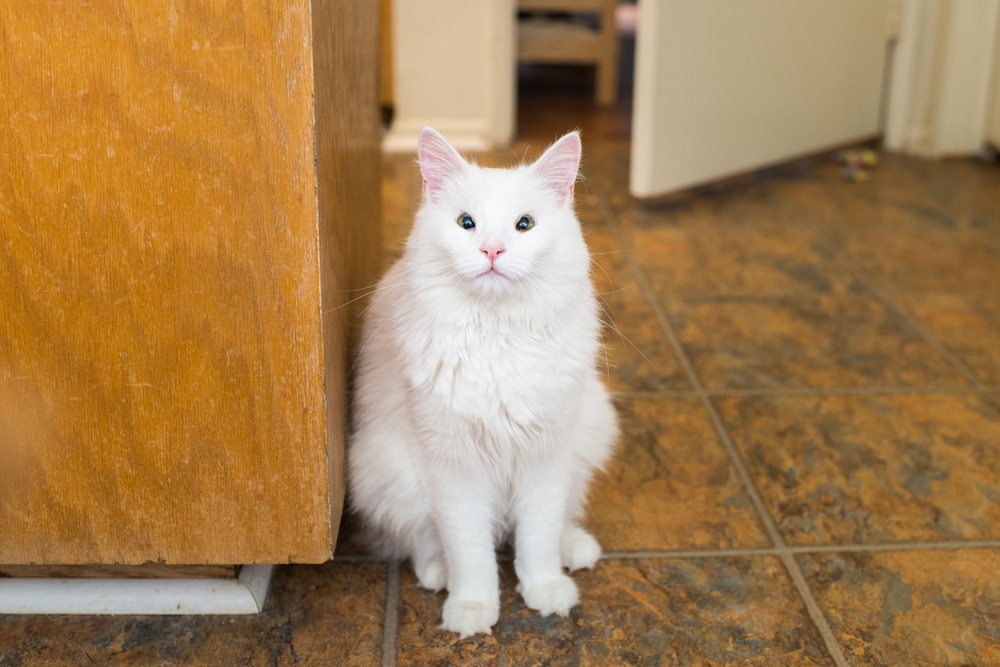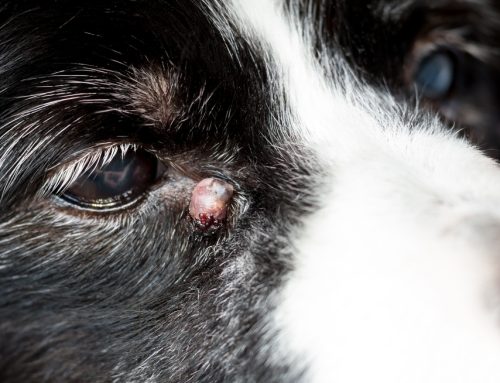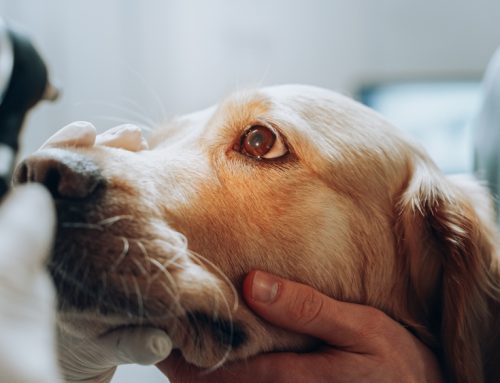June is Adopt-A-Shelter-Cat Month, which coincides with the height of kitten season. If you’ve been thinking about a new feline in your home, now is a great time to reach out to your local shelter. Shelter cats make wonderful companions, but, like dogs and other species, they can suffer from unique ophthalmic conditions. Herpes virus is, by far, the most recognized ocular problem in shelter cats, but at Veterinary Vision Center we also see kittens with a congenital problem called eyelid agenesis. Haven’t heard of the condition? Let’s go through the basics.
What is eyelid agenesis in cats?
Eyelid agenesis, also known as eyelid coloboma, is a congenital defect that causes abnormal eyelid development in cats, and rarely in dogs. In cats with eyelid agenesis, part or all of the upper eyelid is missing, and the lid functions abnormally. The eyelids are responsible for eye protection and for distributing the tear film to keep the eyes adequately lubricated—therefore, eyes lacking this protection become dry, inflamed, and vulnerable to damage. The abnormal conformation can also cause the surrounding skin or the remaining eyelid to roll inward, resulting in hair rubbing directly on the eye.
Eyelid agenesis effects on cats
Cats with eyelid agenesis may have obviously abnormal or missing eyelids, but other, more subtle cases may be mistaken for entropion (i.e., eyelids that roll inward because they are too long). When part of the eyelid is missing, nearby hairs can rub on the eye, causing discomfort, tearing, and corneal ulcers. In the worst-case scenario, ulcers may become deep or infected and cause perforation and ultimate eye loss. In less severe cases, the rubbing, dryness, and exposure may cause chronic inflammation in the eyes, which can then make the normally clear cornea cloudy or discolored, and impair the cat’s vision. Because eyelid agenesis is a birth defect, signs are evident from a young age, and may include:
- Squinting
- Eye rubbing
- Eye watering or discharge
- Recurrent corneal ulcers or scratches
- Eye redness, cloudiness, or dark pigment
Eyelid agenesis diagnosis in cats
Eyelid agenesis can be easily diagnosed on physical examination—no specialized testing is required. However, all cats with suspected eyelid agenesis should be thoroughly evaluated by a veterinary ophthalmologist, who will perform an eye-specific examination, and may recommend a fluorescein stain to rule out corneal injuries caused by the eyelid defect. The cause of eyelid agenesis isn’t known, but multiple kittens in the same litter may be affected, and these kittens may also be born with other congenital ophthalmic conditions that could affect vision or comfort. An ophthalmologist can ensure all conditions are diagnosed and appropriately treated.
Eyelid agenesis treatment in cats
Secondary ulcers, inflammation, or dryness caused by eyelid agenesis can be treated with topical eye medications, but most cases require surgery to achieve comfort and reasonable eyelid function. Surgical techniques vary, and may include one or more of the following:
- Cryoablation — This method involves freezing the hair follicles to remove lashes and hairs that are rubbing on the eye, to resolve irritation and prevent damage.
- Reconstruction — If a large eyelid portion is missing, a surgeon can graft tissue from the lip or elsewhere to fill in the defect.
- Filler injection — In some cases, injecting hyaluronic acid filler material into the skin or remaining eyelid tissue can temporarily reposition the lid. Surgery is eventually required with this technique, but the pet is kept comfortable until surgery can be performed.
Long-term outlook for eyelid agenesis cats

Some severely affected cats may require more than one surgery or corrective procedure, but once treatment is complete, most cats do quite well. Some cats whose eyelid cannot be completely restored may develop ongoing irritation. Lubricants and medications, administered under a veterinary ophthalmologist’s supervision, can help keep the cornea healthy, clear, and comfortable over time, but progressive inflammation may lead to blindness in severe cases.
Eyelid agenesis is treatable in cats. If you believe your cat is suffering from an eyelid abnormality, or would like us to evaluate your newly adopted shelter cat’s eyes, call us and schedule an appointment with our Veterinary Vision Center team.







Leave A Comment